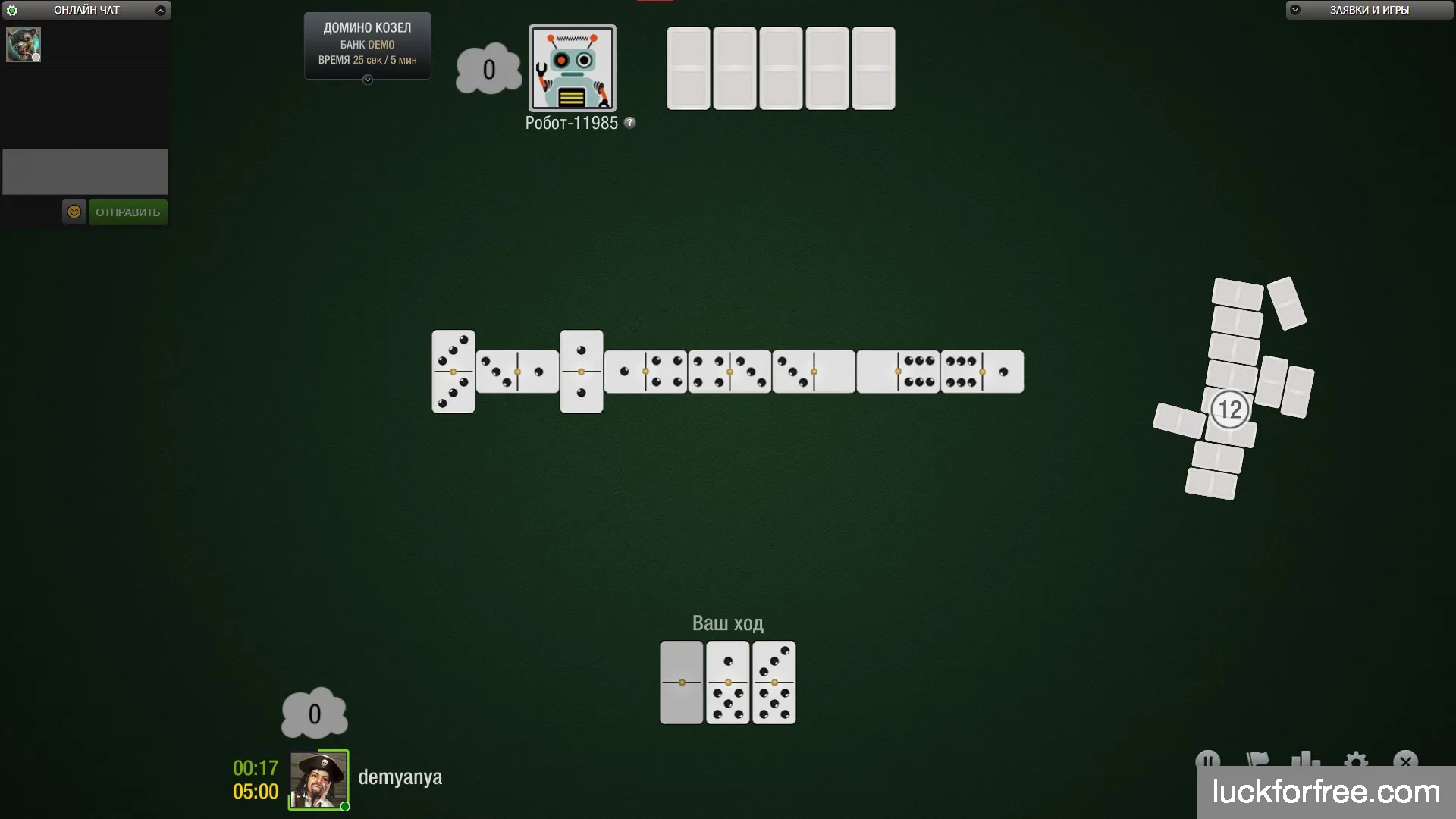Online domino is not just a game of chance but an intellectual challenge where success depends on attentiveness, calculation, and the ability to predict your opponent’s moves. Below are 13 strategies that will help you increase your chances of winning in online play.
1. Difference Between Open and Closed Play
An open game expands your possibilities: many numbers remain on the table, allowing diverse combinations. This style is best when you have many different values and want to get rid of your tiles quickly.
A closed game means deliberately limiting the number of available values on the table to reduce your opponent’s options. This is especially effective online, as you can quickly calculate which tiles remain unplayed.
At the start of the round, evaluate which numbers dominate in your hand. If you have many doubles and repeated values, play closed. If your hand is diverse, use an open style to discard tiles faster.
2. Counting Played and Remaining Tiles
Standard domino uses 28 tiles. A careful player tracks already played combinations and infers which numbers are likely in the opponent’s hand.
- Remember which doubles and pairs are already on the table.
- Watch which values appear most often.
- For example, if several 6s have already appeared, the chance that your opponent still has them decreases.
In online play, keep a mental count or jot notes (if allowed by the platform rules).
3. Blocking as a Way to Control the Game
If winning by domino seems unlikely, aim for a block:
- Create chains that limit your opponent’s moves.
- Play numbers your opponent may have already run out of.
- Force a stalemate where neither can move - the player with fewer points wins.
4. Timely Disposal of “Heavy” Tiles
High-value tiles (e.g., 6-6, 5-5) are risky if the game ends in a block. Skilled players try to discard them early to minimize losses.

5. Tactical Use of Passes
Passing can be a strategic choice. A pass doesn’t always mean weakness:
- If your move would open a favorable value for your opponent.
- If you have no strong options.
- To break the rhythm and force an opponent’s mistake.
6. Analyzing Your Starting Hand
Before your first move, evaluate your hand:
- Which numbers appear most frequently.
- Whether you have doubles.
- Whether to start with high or low values.
7. Controlling Directions
Minimizing open numbers on the table limits your opponent’s tactical options:
- Keep no more than 2–3 open directions.
- Use doubles strategically.
- Don’t create new lines unnecessarily.
8. Analyzing Opponent Behavior
Even in online domino, you can deduce your opponent’s hand from:
- Time taken for each move.
- Frequency of passes.
- Unusual plays.
9. Switching to a Loss-Minimization Strategy
If the game is not going your way:
- Discard heavy tiles.
- Avoid creating new openings.
- Try to end up with fewer points in case of a block.
10. Skillful Use of Doubles
Doubles allow you to:
- Change the game’s direction.
- Create blocks.
- Maintain control.
But don’t play a double without advantage - it might backfire.
11. Strategy Differences: AI vs. Human Opponents
Against AI: logic and precise calculation matter most.
Against humans: unpredictability, rhythm changes, and psychology play a big role.
Use chat and observe your opponent’s style.
12. Time Management in Online Matches
Time limits are crucial:
- Make decisions quickly.
- Use your opponent’s pauses for analysis.
- Quick strategic shifts can bring an advantage.
13. Reviewing Statistics and Rematches
Analyze your matches, especially against the same players:
- Which moves lead to wins.
- Which mistakes repeat.
- Develop your own playstyle.
Strategy Beats Luck
Domino is a game where success depends not on luck but on foresight and control. The better you understand the mechanics and apply proven strategies, the less you rely on chance - and the higher your odds of victory.
Using these 13 strategies will help you control the course of the game and make more thoughtful decisions even in the most intense moments. By applying them regularly, you’ll raise your skill level and minimize errors. Success in domino is the result of a systematic approach.


